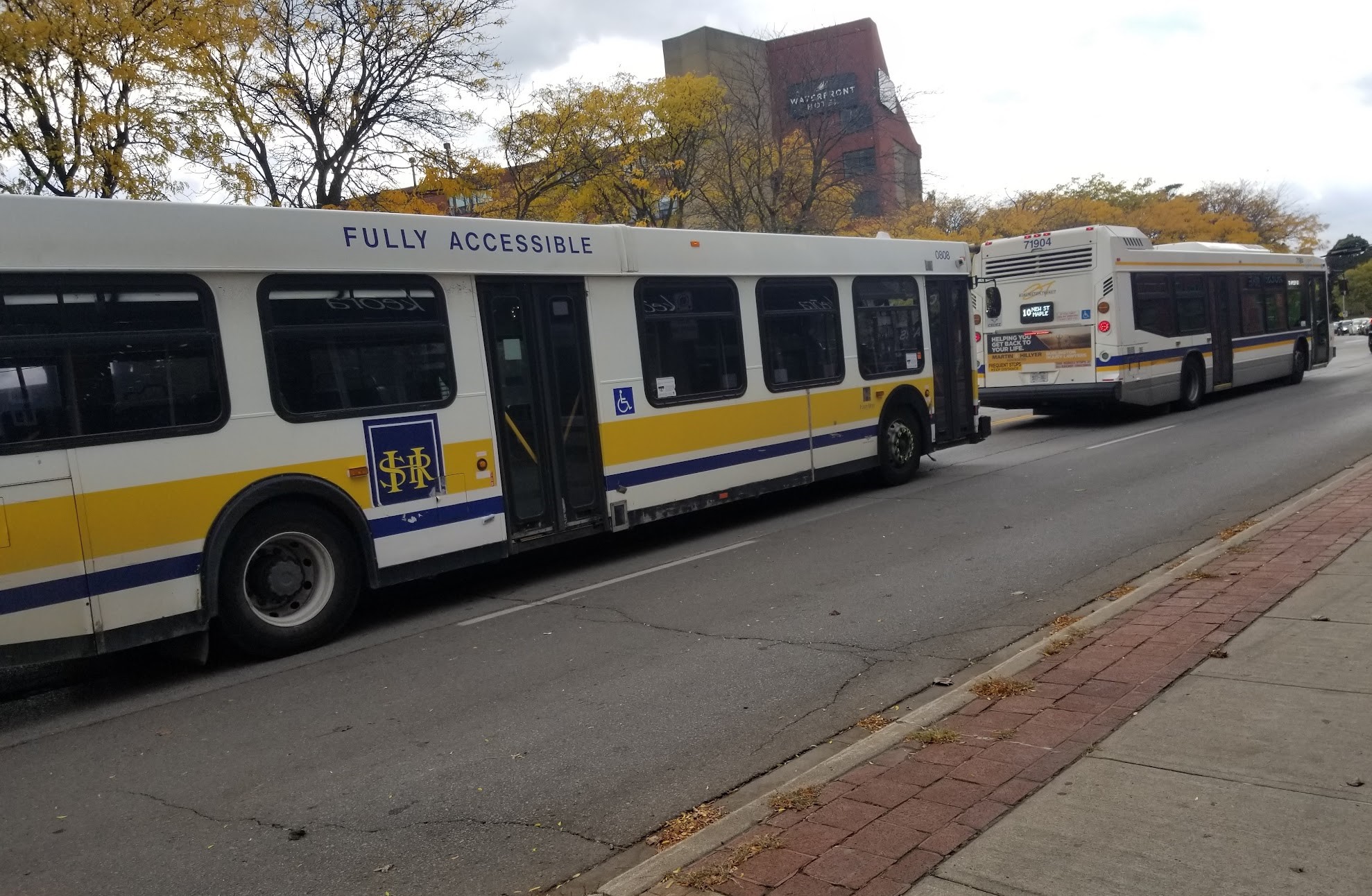By Doug Brown
Opinion.
Ward 5 Councillor Paul Sharman deserves credit for his suggestion in summer 2023 that Burlington Transit study the financial implications of offering free rides to everyone. On the heels of City Council’s decision to make transit free for seniors all day starting Aug. 1, 2023, Sharman wondered why we even bother to collect fares, given that revenue from the farebox is low as a proportion of the total transit budget.
The free-transit study, currently being undertaken, will focus on the operational challenges of eliminating transit fares — and there are sure to be more of them than we expect. The results will give us some valuable insights. However, focusing on operational challenges will say nothing about the wider economic and community benefits of investing in transit.
Those benefits are very real. A number of analyses conducted by economic researchers from across Canada, have shown measurable benefits from expanding the role of transit in our communities. In 2010, a study by the Canadian Urban Transit Association found that investments in transit made an annual economic return of 12.5% over 30 years. A 2016 study for the city of Hamilton found that an 18% increase in transit ridership would save local commuters almost $25 million per year. There are dozens of such research papers dating back 50 years or more.
In 2019, Waterloo Region decided to invest in transit rather than roads after a comprehensive study that included economic impacts. They estimated that spending on better transit at the time would save money in the long run, to the tune of millions of dollars.
At this year’s Transit Users’ Forum sponsored by Burlington for Accessible Sustainable Transit (BFAST) and Burlington Transit, keynote speaker Dr. Atif Kubursi told of European cities where free transit had prompted ridership increases of more than tenfold.
Dr. Kubursi, a professor emeritus at McMaster University, emphasized that there are “substantial quantitative economic impacts” from transit. They include easier commutes, lower health costs, long-term infrastructure savings, and more mobility-enabled spending in the community.
Dr. Kubursi’s company, Burlington-based Econometric Research Ltd., has done cost-benefit analyses of transit for about a dozen Ontario communities, including the Hamilton study quoted above.
Part of Dr. Kubursi’s work has also involved analyzing the impact of car ownership on individual families. The numbers vary by family, of course; everyone’s circumstance is different. But saving $10,000 a year from owning one less car would not be a big stretch of the imagination in many households.
From being a transit laggard for years, Burlington has transformed itself into a place where the system is starting to give glimpses of what can be accomplished, though it is still somewhat limited. At some point in the not-too-distant future, it will become more viable to leave the car at home and commute to most workplaces or GO stations by transit. More of us will be able to use transit for medical appointments and spur-of-the-moment trips to the mall. That will come with City Council’s continued commitment to the course on which they have already embarked.
Let’s understand what we’re getting for our money when we invest in transit. As with any investment, we need to do our due diligence. The expected return needs to be quantified. We need to know where transit investment will lead to new revenue and, equally important, where it will lead to savings for both the community and for every family.
We need this wider study because many in the community see transit only on the expense side of the ledger and do not recognize the many benefits it brings. We’ve all seen the comments in various online media, everything from “I’ll never take the bus,” to “I see only empty buses going by my house,” and even “buses make the street unsafe for children” (never mind the speeders and stop-sign scofflaws). The arguments of transit opponents are easily refutable with hard data.
It’s all well and good to point to transit that works so well in Luxembourg or Tokyo. Burlington’s transit system can bring similar benefits to our own community, but we need to spell them out and quantify them to set realistic, achievable goals. For that, we need a study that goes a step or two beyond the one that’s been undertaken.
The cost does not have to be prohibitive. In fact, it will be a pittance compared to what the city has already spent over the years on transportation consultants.
The current study is opening an important discussion on the role transit can play in our city. I strongly support improvements in our transit network. But I, like Councillor Sharman, also want to make sure that our investments in transit bring real and measurable economic, social, and environmental benefits.
Councillor Sharman deserves credit for raising the idea of free transit. But it would be a pity if council, having made the effort to study it, did not look at the big picture of transit’s role in economic growth, reducing taxes, and saving money for our citizens.
Doug Brown is chair of Burlington for Accessible Sustainable Transit (BFAST).




